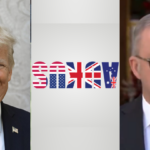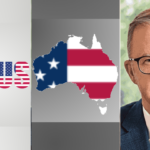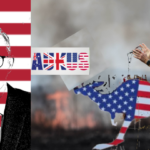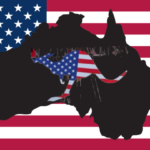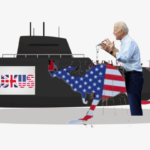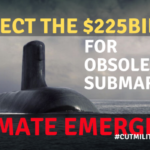Australian Taxpayers Fork Out $800 Million to Win the Favour of Trump
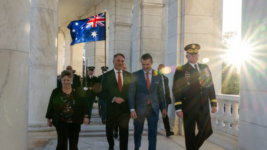
Australian deputy PM and defence minister Richard Marles met with US secretary of defence Pete Hegseth last Friday at the Pentagon in the US state of Virginia, which marked the first such meeting Hegseth has had with a foreign counterpart, and it came after this country had just put down an initial US$500 million (roughly AU$800 million) to be invested in the US submarine industrial base.
“The president is very aware and supportive of AUKUS,” Hegseth told reporters on 7 February 2025. “He recognises the importance of the defence industrial base, which the deputy prime minister pointed out [and] the investment Australia is willing to make.” And in response to a question as to whether US-produced submarines slated to be sold to Australia will be on time, he said, “We sure hope so”.
Since US president Donald Trump took office on 20 January, his nation has been baring its teeth at both its global friends and foe. However, luckily for the nation of Australia, the newly incumbent administration appears to find the AUKUS alliance, which the Albanese government has progressed with gusto over its time in office, as an arrangement that is profitable to it.
With Trump’s twisting of the narrative to an “America First” approach to US foreign policy, the AUKUS agreement, with its promised delivery of submarines to this nation, is now being assessed by the new administration on the basis of what Australia can do for its much larger ally in order to garner its military support and the provision of its nuclear technology to power our own elusive submarines.
Indeed, as our nation hands over its first downpayment on a US$3 billion (AU$4.8 billion) investment into the US military base, the financial instalment itself in the current political context appears more like Australia securing US military protection in the Indo Pacific, than any agreement to jointly preserve the “international rules-based order” in the region.
“The future looks bright”
“This is not a mission in the Indo Pacific that America can undertake by itself,” Hegseth told reporters at the Pentagon, signalling that the US presence in the region in respect of countering a growing China is still important to the Trump administration. “It has to be robust allies and partners, technology sharing and subs are a huge part of it.”
“So, he’s aware and appreciative of his support and leadership on that topic,” the US defence secretary made certain last Friday, in relation to Trump’s position on the AUKUS pact.
But then again, why wouldn’t an America First United States continue on with a security arrangement that sees a weaker nation, Australia, handing over cash right now for submarines that it is readily acknowledged may never eventuate, whilst too making large tracts of its land available to the Pentagon, so that it can heighten its presence in the Indo Pacific to threaten Beijing.
The precariousness of the US-Australia relationship following the first weeks of the Trump administration was evident in the message Australian ambassador to the US Kevin Rudd posted on X following the meeting, which saw him thank Hegseth and Trump for their support of AUKUS and the US-Australia alliance, adding that “the future is bright”, which hinted at how it mightn’t have been.
In this context, the handing over of $3 billion in investment funding to the US comes across more like payments as part of a protection racket on the part of the US in the Indo Pacific at a time, when our political leaders have been concerned the Trump administration may pull out of the AUKUS deal, and the fact that the provision of the submarines to this country is still uncertain.
Securing Pacific presence
Then PM Scott Morrison announced the AUKUS security pact in September 2021, which was presented to this nation, as a relationship that would result in this country acquiring eight nuclear-powered submarines (SSN) – three second-hand US-built Virginia class boats, followed by five UK and Australia-built AUKUS subs – which will cost at least AU$368 billion and continue on into the 2050s.
Australia has provided the US with the half a billion dollars to assist in its submarine industrial base, as AUKUS Pillar I involves Washington selling us three Virginia class subs, capable of attacking the Chinese mainland, starting in 2030s. However, as this process has developed, it’s come to light that the US legislation allows it to renege on the provision of any of the subs if it can’t honour the deal.
Prior to the US considering selling this country a Virginia boat, it must satisfy its own submarine fleet requirement of 66 Virginias, and right now, it requires an extra 17 to meet this goal. So, in order to meet both US and Australian requirements Washington must build 2.33 boats a year, but its only producing around 1.3 annually right now, and this year’s US budget only covers one sub being built.
However, while the acquisition of the US produced subs and even the UK-Australia boats have appeared in doubt, the joint Submarine Rotational Force-West to be established at HMAS Stirling, off the coast of Boorloo-Perth in Western Australia, by 2027 is not, and it will involve four US SSN and one from the UK on rotation.
So, this stationing of US and UK submarines at the joint Australia-US base in WA will easily provide the cover that the eight AUKUS deal submarines would have provided, even if no Australian-owned subs ever appear. And if such a situation is to develop then the Australian taxpayer money being tossed at the Trump administration right now, is acting as a downpayment for future US protection.
Whatever the boss wants
Despite having put the US$500 million payment down before his arrival in Viriginia, and the fact that a dual purpose of his visit was to secure an exemption from any forthcoming trade tariffs, Trump has since announced the imposition of a 25 percent tariff on all steel and aluminium imports into his country, which is set to hit this nation hard.
Australian prime minister Anthony Albanese has spoken to Trump over the phone in the wake of the announcement in order to try and obtain an exemption from the 25 percent tariff, and the US president told this nation’s top minister that he will give the request “great consideration”, however he’s gone on to continue to underscore that there will be “no exceptions” to this steel tariff.
The AUKUS deal appears favourable to the Trump administration not solely based on the downpayments, but it is based upon Washington securing a much greater presence on this continent, along with increasing its control over installations here.
The 2014 Force Posture Agreement has allowed for the presence of 2,500 US marines in the Northern Territory, it facilitates greater interoperability between the two nations’ air forces, and it provides the US with unimpeded access to numerous classified “agreed facilities and areas” on this continent, and when the US decides to upgrade one of these bases, it takes complete control of it.
Currently, the upgrading of RAAF Base Tindall in the NT is underway, and it will include the provision of a storage site for six US B-52 bombers, which again are aimed at China. And any US vessel on Australian soils or waters could be carrying nuclear warheads, including the new jets and submarines, because our government respects the US policy of ‘warhead ambiguity’.
So, that Trump is satisfied with Australia agreeing to pay the US money to invest in its military, as well as to allow his nation to continue its soft colonisation of the north of this continent is hardly surprising, especially as recent diplomatic efforts by our PM and our deputy PM have resulted in no concrete commitment on any front, despite our complete capitulation to US demands.


